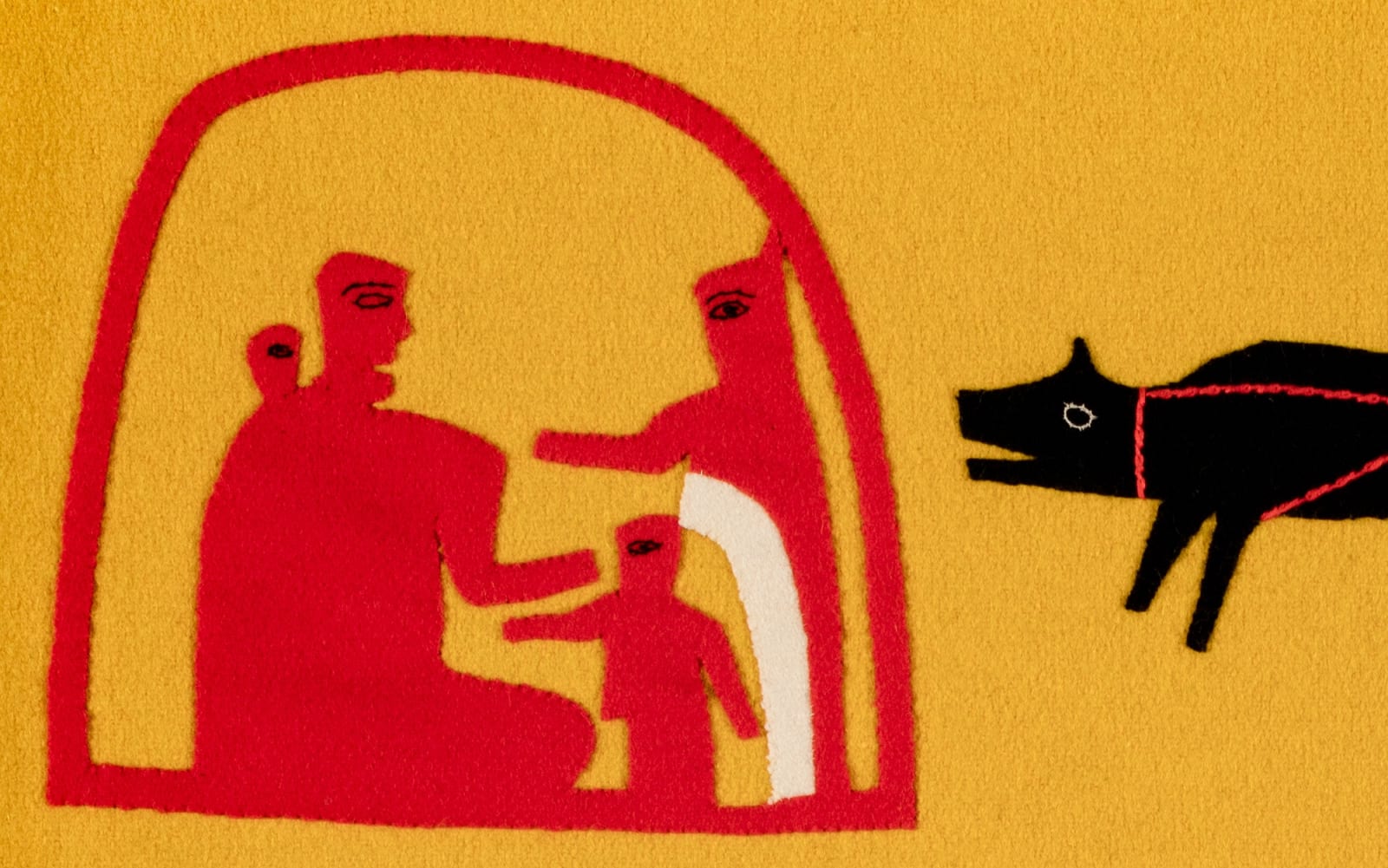JESSIE OONARK, O.C., R.C.A (1906-1985) QAMANI'TUAQ (BAKER LAKE)
signed, "ᐅᓇ".
Further images
Jessie Oonark started creating drawings and a variety of sewn items for sale soon after her evacuation to Baker Lake in 1958. It is thought that she sold her first small “hangings” to the Baker Lake crafts officer Gabe Gély as early as 1963, and she was selling appliqué works on cloth regularly by about 1965. These were sold mostly to qallunaat residents and visitors, so few early examples found their way into museum collections and catalogues. Oonark’s early works on cloth are relatively small and all are narrative, depicting mostly hunting and camp scenes. However, even at this early stage in her career Oonark enjoyed experimenting with composition, subject matter, appliqué, embroidery, and stitching, so these hangings vary considerably in style and execution (see First Arts, 13 July 2021, Lots 15 and 81 for two fine examples).
This lovely work on cloth is one of perhaps three purchased directly from the artist in Baker Lake by a collector who lived there at the time. This coincides with the years 1967-68 when Oonark was beginning to devote considerable efforts to drawing, which might explain the more “graphic clarity” of the figures. [1] Her works on cloth from just a year or two before had been embellished with a fair amount of embroidery, while this work is relatively unadorned and notable for its somewhat larger, fewer, and more boldly rendered figures, which really pop against the rich gold background. Noteworthy also is the division of the action into three distinct narratives and tiers – a compositional feature that would characterize her later works on cloth. The upper and lower registers illustrate typical scenes of life on the land, while unusually, the central narrative hints at an unsettling encounter with a stranger or foe. [2]
It’s quite possible that by 1967 Oonark was already visualizing her imagery as potentially both drawn and sewn, with drawings and works on cloth cross-pollinating each other in content but also in style. (For a contemporaneous work on cloth with similarly unadorned, bold appliqué figures see First Arts, 14 June 2022, Lot 106.) By 1970, Oonark’s career as both a textile and graphic artist would come into full bloom. In the meantime, remarkable works like Untitled (On the Land) epitomize important steps in that direction.
1. Oonark produced a remarkable series of drawings on coloured card stock in 1967. See Sarah Milroy’s article, “Flashback: Jessie Oonark” in Inuit Art Quarterly, (Vol. 30.3, Fall 2017), pp. 82-95.
2. Oonark’s imagery rarely shows or even hints at violence. Two prints that do so are A Terrifying Challenge (1973 #18) and Man is a Killer (1982 #16).
References: For a slightly later work on cloth by Oonark (c. 1969) see Ingo Hessel, Arctic Spirit: Inuit Art from the Albrecht Collection at the Heard Museum, (Vancouver: Douglas & McIntyre / Phoenix: Heard Museum, 2006), cat. 140, p. 165, also illustrated in Walker’s Auctions, 18 November 2015, Lot 114. For more Oonark drawings of the period see Richard Lewis ed., I Breathe a New Song: Poems of the Eskimo, (New York: Simon and Schuster, 1971). See also a work from the Sam Wagonfeld Collection in Survival: Inuit Art, (Loveland, CO: Loveland Museum/Gallery, 2004), p. 94. For a comprehensive overview of Oonark’s life and work see Jean Blodgett and Marie Bouchard, Jessie Oonark: A Retrospective, (Winnipeg: Winnipeg Art Gallery, 1986).
Provenance
A Canadian Private Collection, purchased from the artist;Feheley Fine Arts, Toronto;
Collection of John & Joyce Price, Seattle.






